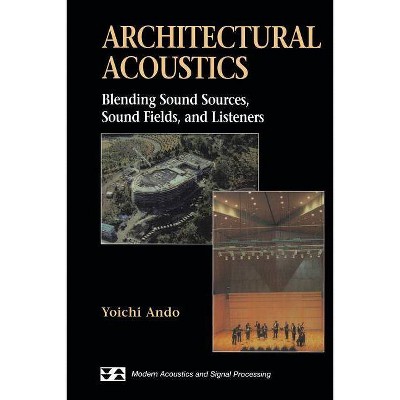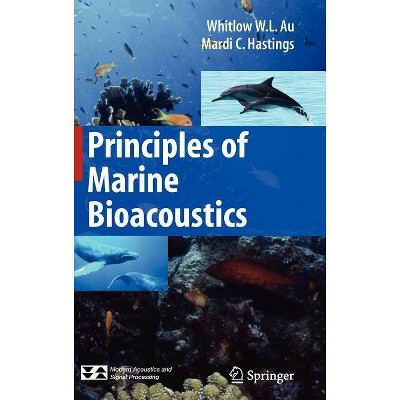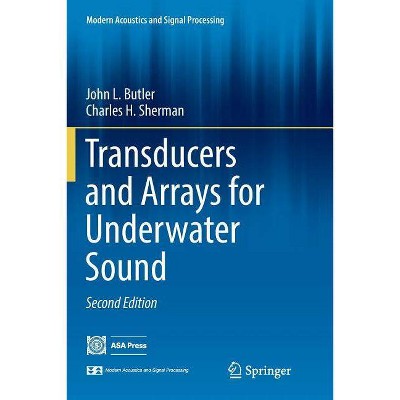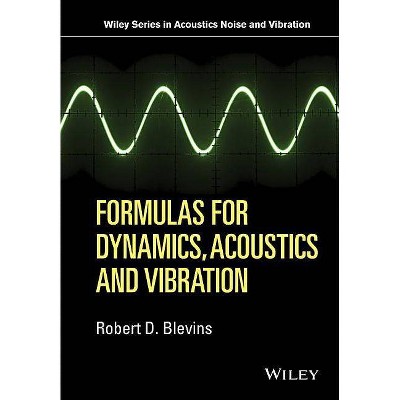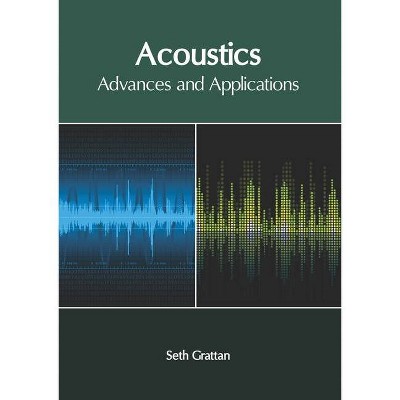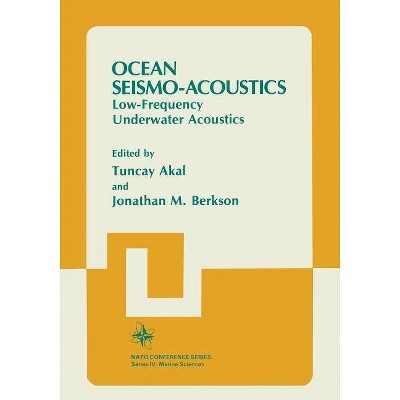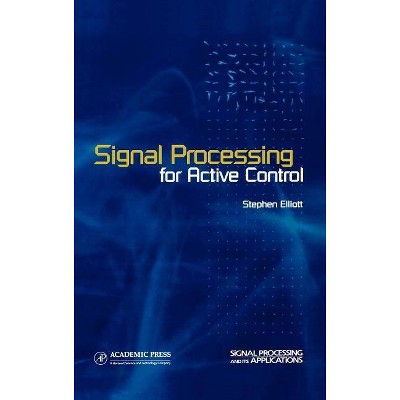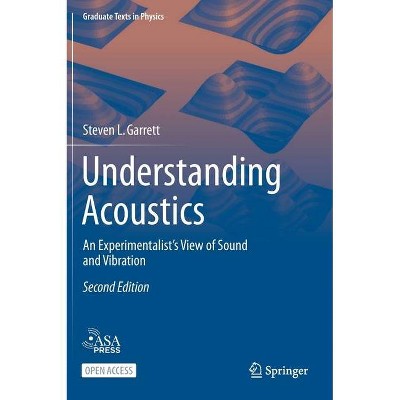Computational Ocean Acoustics - (Modern Acoustics and Signal Processing) 2nd Edition (Hardcover)
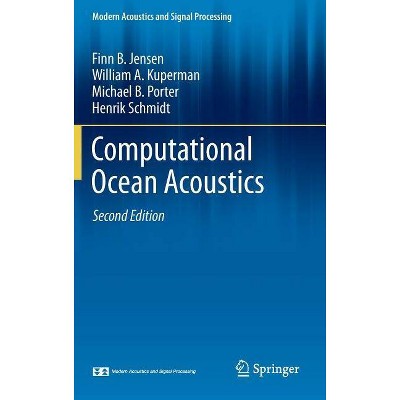
Similar Products
Products of same category from the store
AllProduct info
<p/><br></br><p><b> About the Book </b></p></br></br>Computational Ocean Acoustics presents state-of-the-art numerical techniques to solve the wave equation in heterogeneous fluid-solid media. Thoroughly revised, this volume completely updates the material in the first edition and includes new models based on current research. <br><p/><br></br><p><b> Book Synopsis </b></p></br></br>Senior level/graduate level text/reference presenting state-of-the- art numerical techniques to solve the wave equation in heterogeneous fluid-solid media. Numerical models have become standard research tools in acoustic laboratories, and thus computational acoustics is becoming an increasingly important branch of ocean acoustic science. The first edition of this successful book, written by the recognized leaders of the field, was the first to present a comprehensive and modern introduction to computational ocean acoustics accessible to students. This revision, with 100 additional pages, completely updates the material in the first edition and includes new models based on current research. It includes problems and solutions in every chapter, making the book more useful in teaching (the first edition had a separate solutions manual). The book is intended for graduate and advanced undergraduate students of acoustics, geology and geophysics, applied mathematics, ocean engineering or as a reference in computational methods courses, as well as professionals in these fields, particularly those working in government (especially Navy) and industry labs engaged in the development or use of propagating models.<p/><br></br><p><b> From the Back Cover </b></p></br></br><p>Since the mid-1970s, the computer has played an increasingly pivotal role in the field of ocean acoustics. Faster and less expensive than actual ocean experiments, and capable of accommodating the full complexity of the acoustic problem, numerical models are now standard research tools in ocean laboratories.</p><p>The progress made in computational ocean acoustics over the last thirty years is summed up in this authoritative and innovatively illustrated new text. Written by some of the field's pioneers, all Fellows of the Acoustical Society of America, <i>Computational Ocean Acoustics</i> presents the latest numerical techniques for solving the wave equation in heterogeneous fluid-solid media. The authors discuss various computational schemes in detail, emphasizing the importance of theoretical foundations that lead directly to numerical implementations for real ocean environments. To further clarify the presentation, the fundamental propagation features of the techniques are illustrated in color.</p><p><i>Computational Ocean Acoustics</i> conveys the state-of-the-art of numerical modeling techniques for graduate and undergraduate students of acoustics, geology and geophysics, applied mathematics, and ocean engineering. It is also an essential addition to the libraries of ocean research institutions that use propagation models.</p><p/><br></br><p><b> Review Quotes </b></p></br></br><br><p>From the reviews of the second edition: </p><p>"Book concisely sums up the progress made in computational ocean acoustics over the last thirty years, emphasizing the latest modern numerical techniques for solving the wave equation in heterogeneous fluid-solid media. The authors discuss in detail various computational schemes, highlighting the importance of theoretical foundations that lead directly to numerical implementations for real ocean environments. The book provides various numerical methods and theoretical foundations for solving wave equations in 2D and even 3D varying environments that the reader may find useful as a reference tool." (Qian Zuwen, Zentralblatt MATH, Vol. 1234, 2012)</p><br><br><P>From the reviews of the second edition: <P> Book concisely sums up the progress made in computational ocean acoustics over the last thirty years, emphasizing the latest modern numerical techniques for solving the wave equation in heterogeneous fluid-solid media. The authors discuss in detail various computational schemes, highlighting the importance of theoretical foundations that lead directly to numerical implementations for real ocean environments. The book provides various numerical methods and theoretical foundations for solving wave equations in 2D and even 3D varying environments that the reader may find useful as a reference tool. (Qian Zuwen, Zentralblatt MATH, Vol. 1234, 2012)"<br><br>From the reviews of the second edition: Book concisely sums up the progress made in computational ocean acoustics over the last thirty years, emphasizing the latest modern numerical techniques for solving the wave equation in heterogeneous fluid-solid media. The authors discuss in detail various computational schemes, highlighting the importance of theoretical foundations that lead directly to numerical implementations for real ocean environments. The book provides various numerical methods and theoretical foundations for solving wave equations in 2D and even 3D varying environments that the reader may find useful as a reference tool. (Qian Zuwen, Zentralblatt MATH, Vol. 1234, 2012)<br><p/><br></br><p><b> About the Author </b></p></br></br><p>Finn B. Jensen received the M.Sc. and Ph.D. degrees from the Technical University of Denmark (TUD) in 1968 and 1971, respectively. From 1969 to 1973 he was Assistant Professor in the Department of Fluid Mechanics at TUD. Since 1973 he has been employed at the NATO Undersea Research Centre, La Spezia, Italy. He started as a research scientist developing numerical models of sound propagation in the ocean, then served for 17 years as Head of the Environmental Modelling Group at NURC, and since 1999 as a Senior Scientist and Project Leader for research related to propagation, reverberation, and target strength modeling.</p><p></p><p>William A. Kuperman received his Ph.D. in Physics from the University of Maryland and presently is a professor at the Scripps Institution of Oceanography, University of California, San Diego and the director of its Marine Physical Laboratory. Prior to coming to UCSD in 1993, he was at the Naval Research Laboratory and the NATO Undersea Research Centre in La Spezia, Italy. He has done experimental and theoretical research in an assortment of underwater acoustics and signal processing areas and has spent about three years at sea doing experiments.</p><p></p><p>Michael B. Porter graduated from Caltech in 1979, and received his Ph.D. from Northwestern University in 1984. He held civil service positions at the Naval Ocean Systems Center, the Naval Research Laboratory, and the NATO Undersea Research Centre in Italy. In academia he was a Professor at the New Jersey Institute of Technology, and held visiting positions at the Scripps Institution of Oceanography, and the University of Algarve (Portugal). In the commercial sector he was an Asst. Vice President and Chief Scientist at SAIC before joining HLS Research as its President and C.E.O. His research interests include propagation modeling, target scattering, communications, bio-acoustics, and environmental inversion.</p><p></p><p>Henrik Schmidt is Professor of Mechanical & Ocean Engineering at the Massachusetts Institute of Technology. He received his MS degree from The Technical University of Denmark in 1974, and his Ph.D. from the same institution in 1978. Following a post-doctoral fellowship at the Risoe National Laboratory in Denmark, he joined the NATO Undersea Research Centre in Italy in 1982, where he worked on computational ocean acoustics until he joined the MIT faculty in 1987. Professor Schmidt's research has focused on underwater acoustic propagation and signal processing, in particular on the interaction of sound in the ocean with seismic waves in the ocean bottom and the Arctic ice cover.</p>
Price History
Price Archive shows prices from various stores, lets you see history and find the cheapest. There is no actual sale on the website. For all support, inquiry and suggestion messagescommunication@pricearchive.us
